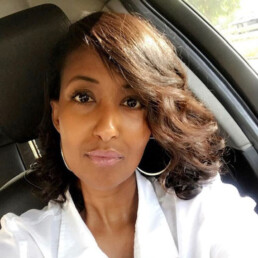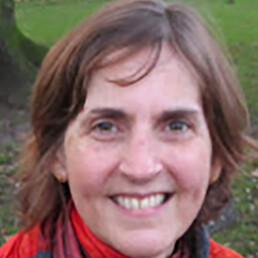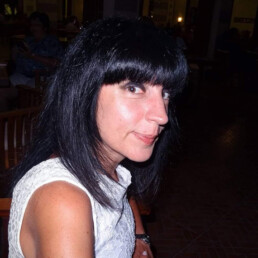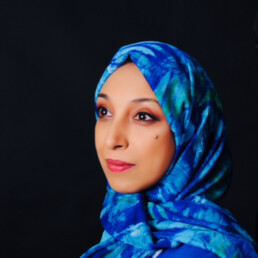‘Is she Somali?’

Written by Baar Hersi
‘Is she Somali?’
This is the question I repeatedly hear in my first term in a new school. I hear it in the corridors, I hear it in their whispers and I hear it when I enter a classroom. This has been my normal for the past decade.
It is so humbling to witness that moment of anticipation, where I get a glimpse of what my answer might mean to them. The question above may seem like a simple question, one born out of curiosity or just kids being nosy, but it is actually far more profound than that. The real question these students were asking was ‘Is she me?…..because if she is me then I can be her.’ Each time this question is asked it is loaded with hope because we know, they can’t be what they can’t see. The reactions on my students’ faces when I answer ‘YES’ is one of the reasons why I became a teacher.
This question empowers me. It gives me superpowers to show up and overcome the challenges I face because there is no greater fuel and purpose than empowering a young person and giving them the permission to be themselves. No one gave me that permission during my school years, 11 years old Baar felt like that alien that no one can relate to but tolerated. I was a freshy for some, not black enough or holy enough for others and too foreign for most. I spoke three languages, performed in front of packed out theatres and could banter for days. I am a people’s person but I didn’t belong in that space. Bless my teacher, Ms Gleeson, who created a safe space for a young immigrant girl overwhelmed by her new adopted country. It took me years to be empowered, to be me and to feel like I belonged at school. I owe this to my mum, who fought for me and siblings to be safe and brave in our new home.
‘Is she Somali?’
This question is my why!
It is why I use my voice and experience to advocate for parents who struggle to navigate the education system and work tirelessly to bridge the gap between school and home. It is why I organise cultural events to instill pride in young people who for far too long have heard only negative narratives about their identity. It is why I donate books written by Somali authors to our school library and use my network to invite Somali professionals to be our guest speakers and mentor our students. I want to empower the next generation to ensure that their experience is different from my generation’s or even my own children who have never been taught by a black teacher (let alone a teacher of Somali heritage) in secondary school in one of the most diverse boroughs in London.
We often talk about the importance of inclusion and representation and how important it is to have a staff body that is reflective of the students in a school. For me representation is more than whether or not the staff reflect the student they teach. It is about ensuring that students do not feel invisible in their own school. I have found that it is very possible to belong to one of the largest ethnic groups in a school but not see one poster of someone who looks like you. Schools are meant to be where possibilities are planted. Schools are meant to be a conduit for aspirations and inspirations but this is not the case for many BAME students. We really have a very long way to go.
Many of my students are shocked when I tell them about my friends and networks which consist of Somali writers, doctors, lawyers, creatives, councillors, engineers, lecturers, teachers, film makers, health professionals, athletes and so many other distinguished professionals and leaders. I cannot count the number of times a young adult has told me that they wish they had a teacher like me. I think they mean someone who they can see themselves in. I would like to think they mean someone who is confident with her identity, who is driven by her values, who feels empowered to be authentic and is willing to open the BHM fashion show in her traditional attire in the first half term in a new school. Yes…..I did that!
So if my representation, my narrative and my journey to self-empowerment helps empower another young person then I look forward to answering….. ‘Is she Somali?’
The complexity of diversity: negotiating “possible spaces”.

Written by Kathryn Kashyap
Teachers often ask how they can approach the learning of pupils who are designated with more than one “label”- for example EAL, SEND and “disadvantaged”. Looking at how to recognise and create “possibility” with all pupils in the spaces where they learn takes the focus away from within-child deficit views. Instead, it makes us look at our practice and listen to our pupils about what works for them. Here I set out how this idea of “possible spaces” can help us address the complexity of diversity.
Firstly, it’s important to interrogate the labels that are being used, challenging negative assumptions around race, gender, class and disability. On further investigation, we find that pupils’ learner identities are far more complex than “just” EAL, SEND and disadvantaged. It’s important to understand which black, Asian or other minoritised ethnic background they are from, and which (if any) religion they follow. Some families may be dealing with the trauma of fleeing from war or persecution. Their family may be living in a working-class context, but from a different socio-economic status in their home country. Post-migration, they may be facing significant challenges. There are also in-depth questions to consider about the aspects of SEND that teachers have identified or are suggesting might be present. Alongside this we need to understand how academic English language acquisition, multilingual learning and for some the impact of disrupted formal education, both in the UK and prior to arrival, can be supported.
Then, we need to talk with the children and young people we are teaching. For my research, I asked a group of Somali young people who had migrated to the UK, and who were considered to need extra support (whether due to EAL, SEND, disadvantage or “underachieving”), where they felt they learnt best, with whom and why. What came across very powerfully was their frustration and for some their anger about how they were often treated as “behind” or even as “unable”. Their knowledge and experiences were ignored within a monolingual, mono-cultural curriculum. Their needs were side-lined or only met partially. Their hopes for making progress were squashed by systems that held them back.
These young people pushed back forcefully. They sought out spaces, both formal and informal, where they could learn, with teachers, mentors or peers who recognised their skills and knowledge, who believed in their potential, cared about their wellbeing and could advocate for them. Often this was about building confidence. Teachers asked the pupils what they knew rather than assuming they didn’t. They used talk, not reading as a way into learning. They drew on their strengths whilst supporting specific aspects. They challenged them and expected them to aim high.
Where these possible spaces existed was not clear cut, however. A lesson could be successful one week and not the next, or a session could shift moment by moment. This could be due to the teaching strategies being used. It could be that the topic was seen as especially difficult or irrelevant, or the pressure to get through the curriculum felt overwhelming. The pupil might be sitting next to a supportive peer one lesson and moved the next.
Acceptance was also a vital aspect of possible spaces. Managing to study and gain the help they wanted without being seen as a “neek”, whilst resisting being seen as unable, was complex. Bending the class rules, but just enough to get a small warning from their supportive teacher. Being the class joker to cover over difficulties with written literacy (but at the same time giving their peers great ideas for their story). “Forgetting” homework when they couldn’t access it. Copying surreptitiously from a neighbour. Arriving late for a lesson which they felt even before they began was going to be a failure due to lack of appropriate support. All tactics which could be interpreted as the pupil being disruptive or disinterested in learning, when in fact they were anything but. Asking “why” in these situations was key to unlocking possibility.
The idea of possible spaces is that it cuts across the anxiety that many of us have as teachers that there are strategies “out there” where pupils are labelled in more than one “category” that no one has told us about that, if we knew them, would solve the problem. It focuses on deepening our relationship with the pupil, looking at what works for them and replicating this across the curriculum. It draws on their knowledge, skills and interests and puts them at the centre not the margins of our planning. It reminds us that when they or we have an unsuccessful lesson, we can look outward at what was happening in the learning space, not inward at deficit or failure. And usefully, given the turn to tuition in the government’s “catch up” strategy, it emphasizes the importance of all mainstream lessons being “possible” spaces.
My Five Top Tips for Making Your School LGBT-friendly

Written by Jared Cawley
LGBT (lesbian, gay, bisexual and transgender) Pride month seems like a very appropriate time to give extra attention to making sure your school is an inclusive, diverse and safe place for your families, students and workforce who identify as LGBT+. The month of June honours the anniversary of the 1969 Stonewall riots, where LGBT people and allies fought against police brutality and harassment that many were and continue to be subjected to today.
Schools are well-known for their openness and celebration of diversity when it comes to students, but some LGBT teachers still feel isolated and uncomfortable to talk openly about their sexuality. Schools are heteronormative workplaces and being a person who is not ‘straight’ requires some careful navigation. Headteachers and school leaders have a responsibility to sustain a school environment that welcomes diversity, supports equality, and defend all staff, including those who identify as LGBT. If you are a school leader who identifies as heterosexual, or is not part of a minority group, you are less likely to notice the exclusion or the discrimination that may be happening in your school.
As a LGBT teacher and a gay man, I have been subjected to abuse and discrimination throughout my life for loving someone of the same sex. Even though Government legislation has strengthened over the last few years, there is still a long way to go. As a LGBT teacher, I am hypervigilant and cautious about who I ‘come out’ to. This feeling of uncertainty is because being straight is the preferred and presumed sexuality. Choosing to ‘come out’ to students, families and colleagues is fearful, as you do not know their opinions and beliefs when it comes to the LGBT community. Making your school LGBT+ friendly must begin with small, deliberate steps. We must acknowledge that this will not happen overnight, but with thoughtful planning and strong leadership, a school can improve its culture of inclusivity for everyone.
When making cultural change in your school, it is important to avoid tokenism. It is superficial to teach diversity for a week or a month as a bolt on to your curriculum, when that is the only time you discuss LGBT rights or teach how to be anti-racist. All members of your school community is needed to make real change, deliberately walking the walk, instead of just talking the talk.
Below are my five top tips for making your school LGBT+ friendly:
1 Use Inclusive Language
Making small changes around inclusive language can have a huge impact on either making people feel accepted and/or feeling excluded.
Here are my suggestions:
- Instead of greeting your staff team or students with, ‘Good morning ladies and gentlemen, boys and girls’, say, ‘Good morning everyone’. With this, you have included all genders and identities without assuming everyone identifies with the gender they were assigned at birth.
- Challenge students and colleagues who continue to use phrases that diminish showing emotion or acting like a particular gender. For example: ‘man-up’, ‘you throw like a girl’, and ‘boys don’t cry’.
- Stop organising students into boys’ teams and girls’ teams, find different ways.
- Avoid reinforcing gender stereotypes.
2 A LGBT+ friendly school is everyone’s responsibility.
- It is a mistake to think that creating a LGBT+ friendly school should solely be the responsibility of the ‘gay teacher’. It should be a collective responsibility. Headteachers, senior leadership teams, teachers and the rest of the school community should be actively working together to promote an inclusive and diverse environment, ensuring all members of staff and students feel safe and can be their authentic selves.
- CPD and INSET days could involve external speakers, offering your staff a refreshing voice and a different perspective.
- LGBT+ people experience the world differently to their heterosexual counterparts, and school leaders should give them a safe space to talk about their experiences, with the support of their LGBT allies.
3 Be Proud of LGBT Visibility
If you are showing a prospective same sex family around your school, or a LGBT teacher comes for an interview, or a new student who may identify as LGBT or does not know their sexuality, how do they know that this school or future workplace is a safe and inclusive environment where they can be their authentic self?
Here are some suggestions:
- Give teachers a choice to wear LGBT badges/pins or have LGBT lanyards
- Display the Pride flag inside and outside your school. There are many flags here that represent the LGBT+ community.
- Displays. Show your visitors that you celebrate inclusion and diversity. Have displays celebrating LGBT stories and issues.
- Encourage LGBT+ teachers to make a network or support group where they can talk about LGBT issues and use this to show that LGBT+ voices matter.
- Have your senior leadership team and staff go on a learning walk, where the focus is LGBT inclusion. Can you see it represented in your school?
4 Have an inclusive and diverse curriculum
Your curriculum should be well planned and deliberately tailored to minority groups and should not be left to chance. To avoid tokenism, these practices should be carefully planned and seen across all subject areas.
Here are some suggestions:
- Children’s story books should include and promote different family dynamics, including same sex couples, single parents, foster parents, disabled children and parents, families of colour, families of different religions. Here are some ideas.
- In mathematics, have word problems that are inclusive of same sex families. Instead of Mrs. Smith or John, have names that come from a range of countries and heritages.
- In your presentations, ensure that the pictures you use show a range of minority groups.
- In your humanities curriculum, teach about colonisation, the impact of imperialism, and celebrate indigenous communities and customs. See here for more about decolonising your school curriculum.
- Diversify your set texts, offer a range of authors, not just white, heterosexual men.
5 Educate Yourself
I believe the best way to learn more about the LGBT community is to educate yourself, have an open mind and be comfortable with being challenged. I feel there can sometimes be a fear about people who do not belong to a certain minority group, making a mistake or unconsciously offending someone, or using a term or acronym that is outdated.
Here are my suggestions:
Read books and use organisations that specifically discuss LGBT voices in education and whole school approaches:
- Catherine Lee’s ‘Courage in The Classroom. LGBT Teachers share their stories’.
- Shaun Dellenty’s ‘Celebrating Difference. A Whole School Approach to LGBT+ inclusion’.
- Andrew Moffat’s book series for the No Outsiders programme.
- These organisations offer a plethora of teaching resources: Schools Out, Stonewall Education, Mermaids UK, LGBT Ed, and The LGBT Primary Hub.
- The LGBT Primary Hub offers a snappy timeline of our history and glossary of LGBT vocabulary.
Did you think being a female leader was tough? Try being a diverse one.

Written by Susie Fernandez-Gomez
Med in Educational Leadership, Head of MFL and SLE
There are studies concluding that race and gender may interact to shape different dimensions of women’s employment experiences. Therefore, understanding the interlocking system of intersections is key to addressing diversity challenges in education. The theory of intersectionality articulates a framework which can help address the challenges that minority women face with regard to their identities and their experiences. When race and gender act as a barrier, minority women in leadership positions may face specific challenges which are often unmet by others.
I am one of those women. What some would class as the ‘too different type’ of leader.
According to research, women have developed values and beliefs that translate into specific behaviours. Women are considered to socialise to show feelings, compassion, patience and intuition. This has led to a judgement that all women need to showcase these attributes in order to become effective leaders. One could argue that this list of values and skills would be ideal if it wasn’t for the fact they have actually become barriers which women have to overcome to become leaders.
I am one of those women. What some would class as the ‘soft type’ of leader.
On the other hand when women display attributes such as strength in character, being passionate about their own views, the ability to ask difficult questions or relentlessly having high aspirations from their followers as well as their own leaders, frustratingly, there is still a tendency to class these women as difficult and scary.
I am one of those women. What some would class as the ‘hard type’ of leader.
At this point you are probably wondering:
How can she claim to have all these attributes at once?
I will answer your question by posing another:
How could anyone become a leader and not be a mixture of all those attributes?
Surely if you offer different views, can support and empathise with your followers at the same time as showing the strength needed to lead them and challenge the establishment, would that not make you a true leader that can connect pretty much with any type of follower?
It would seem not…
I have faced great challenges when attempting to reach senior leadership positions. In particular, I believe that cultural variations exist in terms of expectations of leaders. Kuckhohn (1951) defines culture as a pattern or way of thinking, feeling and reacting in specific situations. Culture signifies values, ideas and symbols. Leadership expression may therefore vary based on the values, practices and symbols followed by individuals within a society. Societies may support either masculine or feminine values. Societies like the UK which support feminine values are found to balance masculine traits like aggression along with feminine traits like cooperation and collaboration. When leaders from different cultures co-exist, it can lead to potential challenges regarding how a leader should behave.
I am one of those leaders who happens to be culturally different. That combined with being a woman that shows ‘soft’ attributes as well as ‘hard’ characteristics, which only male leaders are praised for, makes me a bit too weird, I suppose…
The truth is that many women, just like me, who attempt to reach senior leadership positions will need to balance potential biases from various levels. One such bias is expectations of specific qualifications and extensive experience, especially among those of different racial origin. The average white British male aspiring leader already has the most valued qualification desired for senior leadership that there is: the nationality and the gender. In regards to experience, as long as he can show potential, the box would have been ticked. Why not apply for the job, hey?
I am one of those leaders who is not British nor male so my lists of qualifications and proven experience do have to be quite extensive, indeed. Why would I dare applying for the job, really?
I have often felt that my non-Britishness has been a factor which has led to such lack of opportunities.
Diversity is key to education leadership, as the intersection of different characteristics may highlight some systemic challenges faced by leaders. Awareness and alertness exhibited during communications, along with insight into the rules, practices and conventions to be followed in various settings, are often more evident when there is diversity in leadership.
Moreover, diverse leaders may respect the cultural differences of their teachers and remain well-informed about the various cultures. Therefore, a diverse leader may define the roles and responsibilities of the members while acknowledging differences in expectations. Communication management and trust are important factors which support success in institutions that have diversity in their leadership positions.
Time has come for schools to understand the benefits of diversity leadership. Diversity in leadership is key as it can enhance a wide range of views and opinions. It has also been argued that such different perspectives can help in problem solving. By supporting diversity in leadership, it is possible to improve self-efficacy, resilience and self-management. Research has also identified that by enhancing trust-based accountability rather than test-based accountability, it is possible to enhance the quality of outcomes.
Women leaders are considered to establish better morale and therefore are able to achieve better results. A preference for diverse women leaders can help achieve such trust-based accountability. Diverse women leaders are considered to provide better support for employees. This can in turn mean that teachers are provided with independence, agency, and an ethical and righteous purpose, along with a trust-based accountability system.
I am one of those leaders whose team respect and love in equal measures, I can proudly say.
The key component to development of leadership is by establishing an identity as a leader. However, for the female leaders, it has been argued that the failure to include the discussion of the identity and the gender identity especially related to the leadership identity development can lead to additional challenges. The failure to discuss the issues with gender identity and its effect on the identity and the leadership can be essential to understanding credibility in a culture that is deeply impacted by the external environment.
Through the entire process of leadership identity development, the female leaders may be asked to prove their credibility as a leader. As a diverse female leader, at various junctures of my career I have been asked to mellow down my ‘Mediterranean’ ways.
I am one of those leaders who has said NO. This is who I am and I will stand united with many other diverse female leaders out there who, I am sure, have some stories to tell about their own tough journey.
The Absence of Diversity in the Literature Curriculum – and its Lasting Impact

Written by Anjum Peerbacos
20 years experience as a teacher
Riz Ahmed made a powerful speech regarding diversity in the Arts: http://www.independent.co.uk/arts-entertainment/tv/news/riz-ahmed-warns-parliament-that-lack-of-diversity-in-tv-leads-people-to-isis-a7610861.html Riz Ahmed warns Parliament that a lack of diversity in TV is leading people to Isis www.independent.co.uk
He stated that if young people could not see themselves as part of the narrative or the mainstream representation, they would turn elsewhere to feel that they had a sense of belonging. He said it was the responsibility of the Arts to reflect society; to reflect the patchwork that makes up a wider world, and our global community.
In so many ways, Literature is another Art form and should be doing the same. When we study texts in class, there should be an opportunity for students to be able to see themselves in the literature world. However currently that is not the case.
For more than two academic years now, I have taught the new GCSE curriculum for English Literature, I have taught ‘Lord of the Flies’ by William Golding, ‘An Inspector Calls’ by J.B Priestly, ‘A Christmas Carol’ By Charles Dickens, ‘The Strange Case of Dr Jekyll and Mr Hyde’ by R.L Stevenson, and ‘Romeo and Juliet’, by William Shakespeare. White males that are no longer with us, have written all of these texts.
It may be that because I work in a boys school that these texts have been chosen, as the demographic of the school is largely white and male; however one could argue that in such circumstances it is vital that we expose our young people to the width, and breadth of the spectrum of the society in which we live. Students regardless of demographic and gender should be exposed to a range of writers’ experiences and Literature. It broadens their horizons, and ultimately their experiences. Students have studied the above texts, in addition to a small collection of poems largely about war, with the anecdotal inclusion of Benjamin Zephaniah and John Agard. ‘The Conflict Cluster’ largely addresses the atrocities of war, and as a result these young people have not been exposed to the wealth of Literature that exists in the world.
Across the exam boards, the choices have been extremely narrow. There are few women and even fewer texts from a diverse or BAME background. I appreciate the need to study the works of Shakespeare but, not counting The Bard, on the AQA specification there are 19 opportunities to explore other Literature texts and only 2 are from non-White authors.
On the Edexcel specification there are 15 opportunities to study a text written by a white male, there is only 1 non-White BAME author. On the Edexcel specification, all White Male playwrights write the Modern Drama Texts. WJEC offers two options which are non-White authors, however is more inclusive of female writers over time.
Obviously, I understand that we want children to study, learn and love Shakespeare and he is a white male and is from the 17th century. There is one re-occurring BAME author for modern prose and that is Meera Syal and her novel ‘Anita and Me’, and I can’t help wondering how much of a token of her appearance on the curriculum is.
My other concern regarding the curriculum is does it need to be British? And is there a place for Modern World Literature or modern world prose or drama? Why are we limiting our young people to English British largely male Literature, which is no longer representative of the global world in which we all live?
In addition, what constitutes British Literature? Is Syal considered English Literature or British Literature? Moreover, why are we not considering the likes of Malorie Blackman? Blackman is a modern Black female author and is much needed. She addresses many sensitive issues within her texts which provide the debate needed, which would also meet the Social Moral Spiritual and Cultural (SMSC) criteria, which Ofsted demands of schools.
I happen to work in a boys school, and I am teaching an entirely male curriculum, bar a few poems in the poetry anthology, and my worry is that these boys are going to live, work, learn and prosper and flourish in a world which includes men and women. A world, which includes the young and the old. A diverse world which includes people from all walks of life. So why is our Literature curriculum not reflecting this and preparing them for the alternative view? For the different perspective? For the obscure or the distance or the far-reaching? Why is it so inward looking and insular? Surely, this is then a potential breeding ground to consider anything different as ‘The Other’? How is this progressive?
As Ahmed stated the Arts should be a representation of the world and narrative in which one can see oneself. Why aren’t ‘we telling these kids they can be heroes in our stories, that they are valued’? Ahmed goes on even further to state that if a young person cannot see themselves in the wider narrative then ‘we are in danger of losing people to extremism’. I think he makes some valid points. If you are studying a text for six weeks in a classroom, and potentially over five years you do not find yourself represented in any of those stories, then is Ahmed making a wider point? Do we not have a responsibility to deliver a narrative which is outward looking and less insular?
The curriculum was developed under Michael Gove, https://qualifications.pearson.com/en/qualifications/edexcel-gcses/english-language-2015.html
and I feel as though he has been able to dictate a curriculum, which he saw fit in an era, which is no longer fitting or applicable to our young people now.
The issue has been raised before, however I feel that now more when students are asked to regurgitate texts in exams, texts that they may not be able to relate to, or even understand, it has become a more pertinent issue. In light of recent events where we have witnessed a rise in hate- crime, communities feeling isolated and marginalised, immigrants being targeted; I think that now more than ever our young people should understand a wider broader spectrum of literature appreciating and celebrating difference and diversity. Of course, there is a place for Shakespeare and Romantic poetry, and of course, there should be an appreciation of the likes of Dickens and Austen. However, should there not be an opportunity to experience World Literature?
Our young people are interacting on a global platform and developing a global community. If I were a young person living in 21st century Britain, I would not think the Literature that I am exposed to on the current curriculum is in any way reflective of me, or the world in which we all live.

